If your laptop loses internet connection when connected to an external monitor, you are not alone. While Wi-Fi problems are common, this could also be a glitch with the monitor or the laptop itself. Fortunately, we know some of the possible reasons, and based on this, we have some foolproof solutions to help you if your Wi-Fi connection is lost when connected to an external monitor.
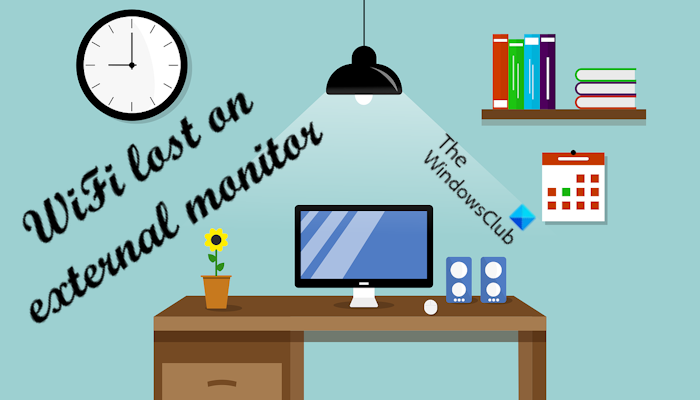
Wi-Fi not working when the external monitor is connected to the laptop with HDMI?
If your WiFi is not working when you connect your laptop to an external monitor using the HDMI cable, chances are, that the network adapter or the display adapter is outdated. So, while you should update the network adapter or the graphics card to check if it helps fix the issue, you can also run the network adapter troubleshooter. Alternatively, switch the HDMI cable to a new one to check if it helps fix the issue.
WiFi connection lost or drops on connecting external monitor

Having said that, sometimes, there could be a glitch with the network adapter drivers, or the connection cables are loose or damaged. It could also be possible that the power-saving mode for the network adapter is enabled, and hence, you encounter the issue.
Whatever the reason, we have a list of proven solutions that can help you fix the issue when there’s interference by the external monitor with the Wi-Fi.
- Preliminary steps
- Run the Network troubleshooters
- Update the Network adapter and Graphics card drivers
- Reinstall the Network drivers
- Change the power management settings of the network adapter
- Check the WLAN AutoConfig service
- Switch the home network to Private
- Change your WiFi band
- Change your WiFi Channel
- Use Google DNS
- Update your BIOS.
1] Preliminary steps
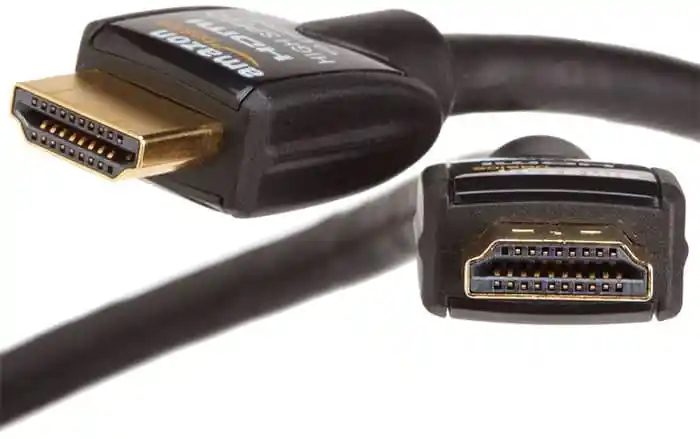
Before you move on, try the primary troubleshooting methods you may want to restart your PC and/or the WiFi router to check if it helps the issue. If that does not help, check for pending Windows Updates and install them.
You should check if there are any loose network cables. If yes, then connect them properly. But if the network connectivity is weak, you may want to switch networks or try an ethernet connection instead. Besides, if there’s an issue with the HDMI cable, you may want to use a new one.
Read: Network Connectivity issues with Hotspots and Wi-Fi adapters in Windows
2] Run the Network troubleshooters
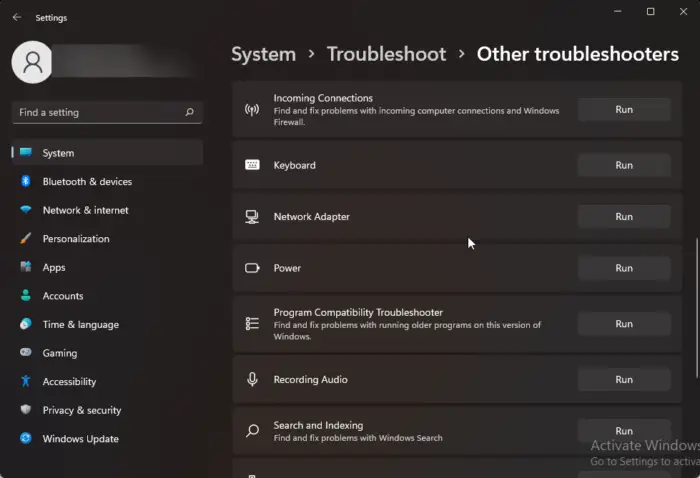
Sometimes, the issue seems to be related to the network connection. Hence, you can use the built-in Internet Connections troubleshooter by Windows to fix the issue.
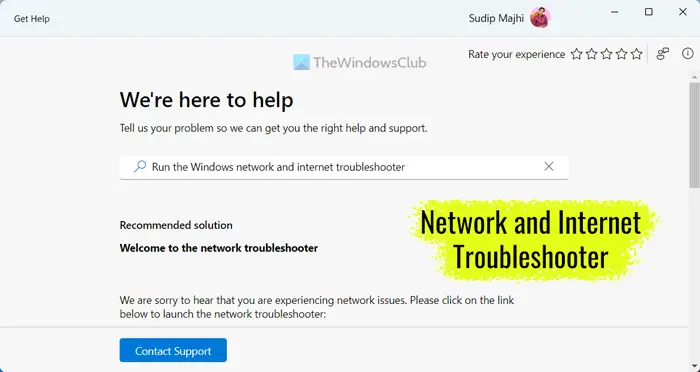
You may also try running the Network and Internet Troubleshooter vvia the Get Help app.
Read: Windows did not detect a properly installed network adapter
3] Update the Network adapter and Graphics card drivers
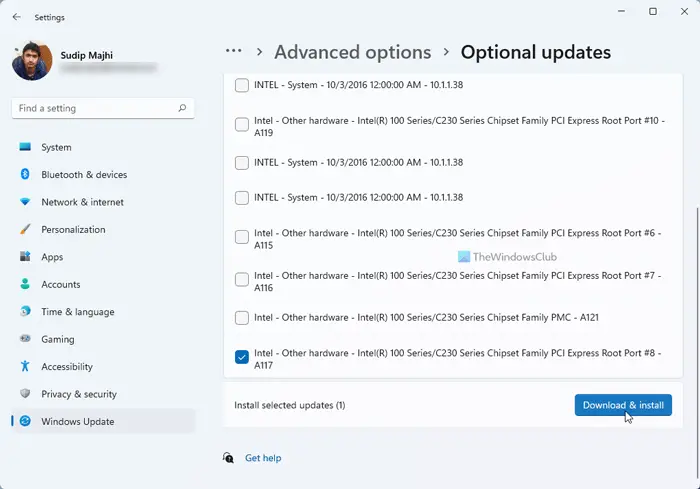
Sometimes, your laptop may lose its internet connection when connected to an external monitor. This could be due to outdated network adapter drivers or graphics card drivers. Therefore, updating the network drivers or the graphic drivers to the latest version may help you fix the issue.
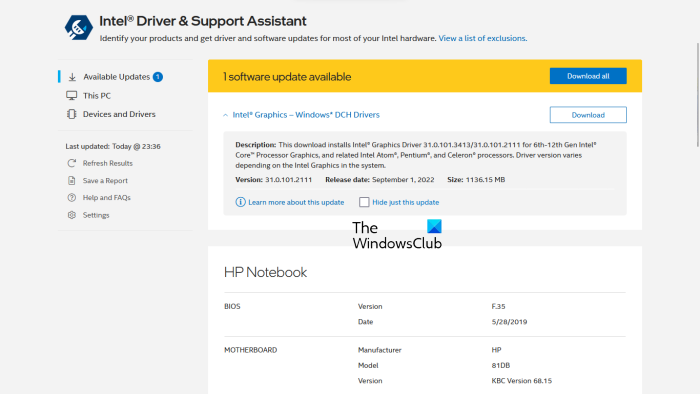
Alternatively, you can use dedicated software depending on the make of your computer or your graphics card, like Intel Driver & Support Assistant, MyASUS app, HP Support Assistant, etc.
You can also try reinstalling your graphics card driver. For this, you have to remove your graphics card driver completely by using the Display Driver Uninstaller utility (DDU). Before uninstalling your graphics card driver, download its latest version from the official website of the manufacturer. Now, run the installer file to install the graphics card driver again.
Read: Where to download Ethernet Drivers?
4] Reinstall the Network drivers
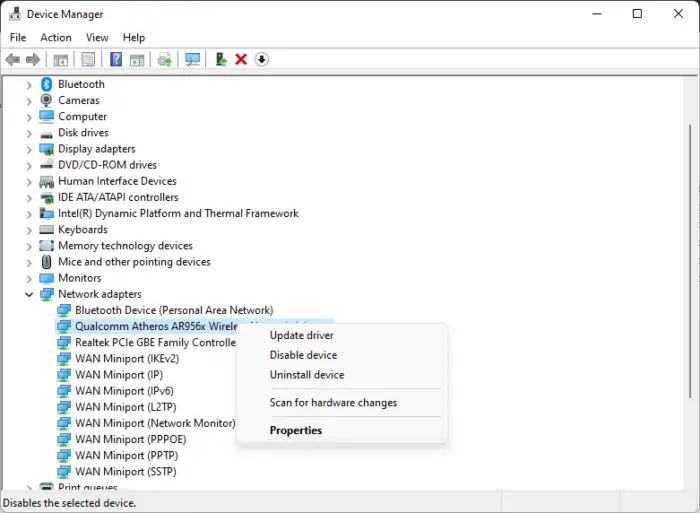
If there’s a glitch with the drivers, it’s advised to uninstall the network drivers and then reinstall them to check if this helps fix the issue. To do this, open the Run console (Win + R) > type devmgmt.msc > Enter > Device Manager > expand Network adapters > right-click on your Wi-Fi device > Uninstall device > Uninstall.
Now, restart your PC and the Wi-Fi driver should be installed automatically.
You can also install the latest Wi-Fi driver manually from the manufacturer’s website.
5] Change the power management settings of the network adapter
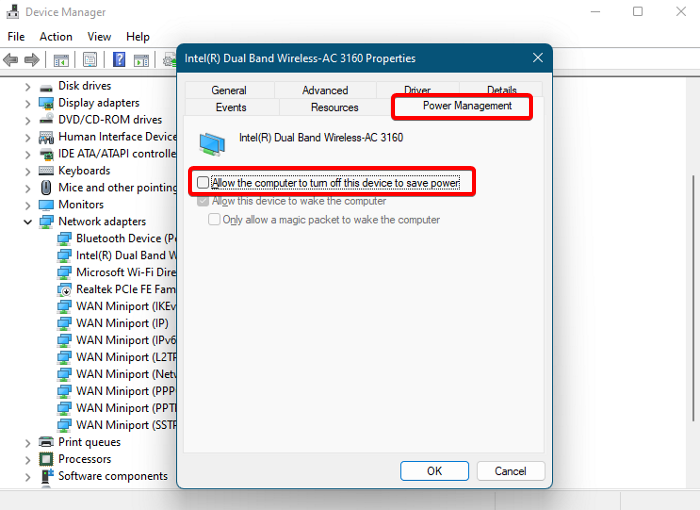
Also, many users have found that the internet connection starts working when the laptop lid opens and stops working when closed. In this case, you can change the power management settings of the network adapter.
For this, open the Device Manager > Network adapters > right-click on Wi-Fi adapter > Properties > Power Management tab > Allow the computer to turn off this device to save power > uncheck.
Alternatively, you may change the wireless adapter power saving mode using the PowerCFG tool to keep the internet active when the laptop lid is closed.
Read: Allow the computer to turn off this device to save power is grayed out
6] Check the WLAN AutoConfig service

It could be possible that the Windows wireless service is not running or not working properly, and hence, your computer is dropping the internet connection.
In this case, go to the Service Manager, double-click the WLAN AutoConfig service, and check if it’s running. If not, change the Startup type to Automatic and click Start to run the service.
Read: Windows could not start the WLAN AutoConfig Service, Error 1068
7] Switch the home network to Private
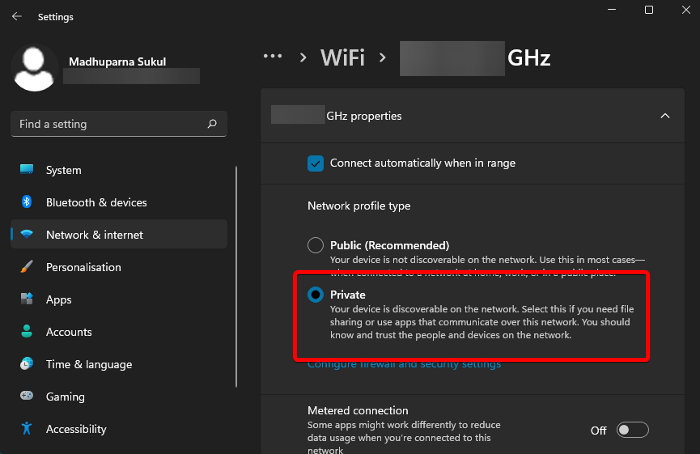
Keeping the home network Public reduces the internet speed and therefore, the laptop loses internet connection when connected to the monitor. In this case, change the network profile type of your Wi-Fi connection to Private and fix the issue.
8] Change your WiFi band
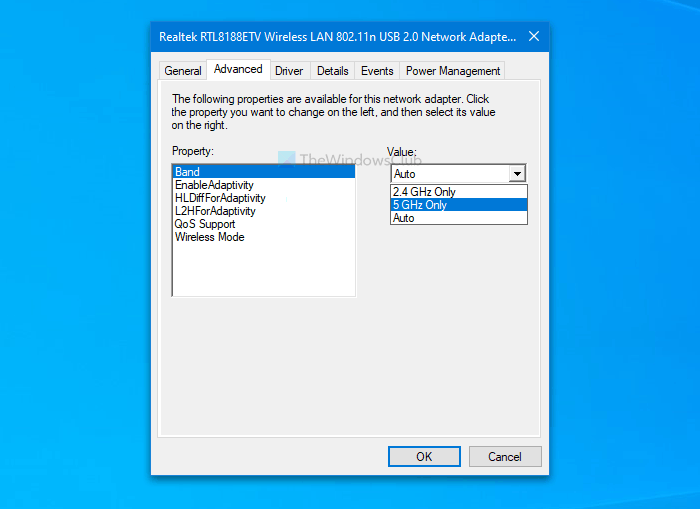
You should also try changing your WiFi band. If you have a dual-band WiFi router and your system’s WiFi card supports multiple WiFi bands, you can switch your WiFi band. Switch your WiFi band from 2.4 GHz to 5 GHz and vice versa. This trick has worked for some users. Maybe it will fix your issue too.
9] Change your WiFi Channel
One working fix to resolve this problem is to change your WiFi channel. To do this, you have to log in to your WiFi router. Contact your ISP support to know the IP address of your WiFi router that is used to log in. In addition to this, you should also know the username and password to log in to your router.
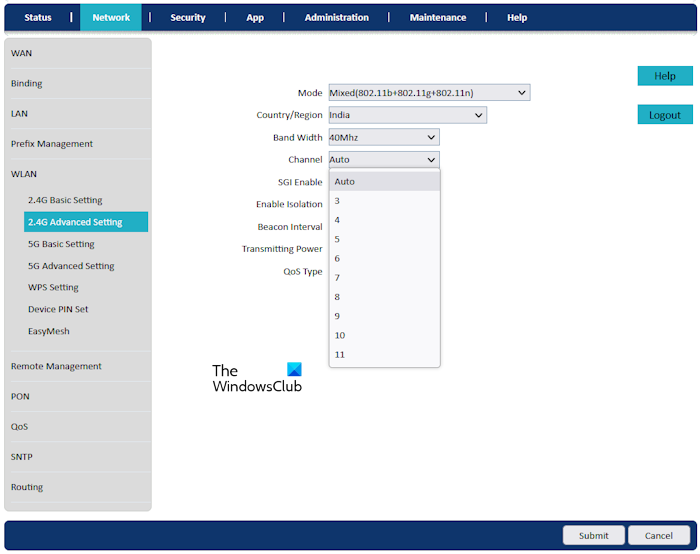
After logging in, you need to find out your Network settings. Once you find it, change the channel for your WiFi band. On my router, I found this setting under the Advanced settings for a particular band.
In most cases, the Channel is set to Automatic. For most users, changing the Channel from Automatic to 1 worked. You may need to try different channels and see which one works for you. If any network issue occurs after changing your WiFi Channel, revert the changes. If despite reverting the changes, the network issue persists, contact your Internet Service Provider for assistance.
Related article: Second Monitor is zoomed-in on Windows computer.
10] Use Google Public DNS
You can also try setting up the Google Public DNS on your system. To do so, you need to edit the properties of Internet Protocol Version 4 (TCP/IPv4). Edit its properties and use the following DNS address.
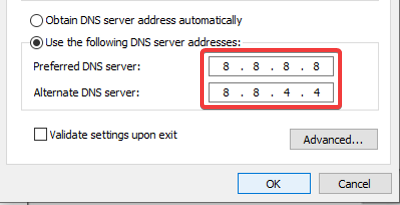
- Preferred DNS server: 8.8.8.8
- Alternate DNS server: 8.8.4.4
When you are done, click OK to save the changes.
11] Update your BIOS
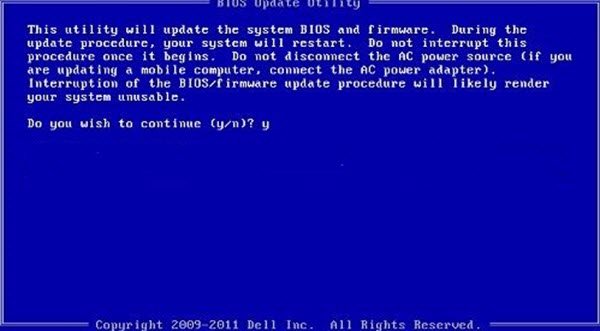
If the issue still persists, update your system BIOS. According to the affected users, the issue was fixed when they updated their system’s BIOS. Hence, you should also try this.
If none of the above methods work, you can reset the Network and check if this can resolve the connection issue with the monitor.
Why does my Wi-Fi disconnect when I connect a monitor?
If your Wi-Fi disconnects when you connect a monitor, the problem may be associated with your network adapter or graphics card driver. Maybe the drivers are corrupted. Your cable can also cause this problem. Hence, check your cable. Make sure that you use a high-quality cable, especially the shielded one.
Can an external monitor affect Wi-Fi?
Yes, an external monitor can affect your Wi-Fi connection. But this happens in a few cases. The HDMI cable that you use can sometimes be affected by interference issues due to which the Wi-Fi connection breaks randomly. High-quality shielded HDMI cables are more immune to interference issues. The bad network and display drivers can also cause this problem.
Read next: Mouse lag when connected to an external monitor.
Can a monitor affect Internet connection?
Yes, monitors can affect the Wi-Fi signals. Therefore, it’s advised to keep Wi-Fi routers away from some displays. The emission can interfere with a 2.4 GHz band, especially between channels 11 and 14. Therefore, you can reduce this interference to ensure a better Wi-Fi connection.
Why does my laptop keep losing its Internet connection?
If your laptop keeps losing internet connection, then there’s a possible issue with the wireless connection and not the device. The usual culprits can be a weak Wi-Fi signal if the servers are down with your internet service provider (ISP) network, or if there’s a hardware problem. Therefore, make sure that your Wi-Fi has a strong signal or contact your internet service provider.
Leave a Reply